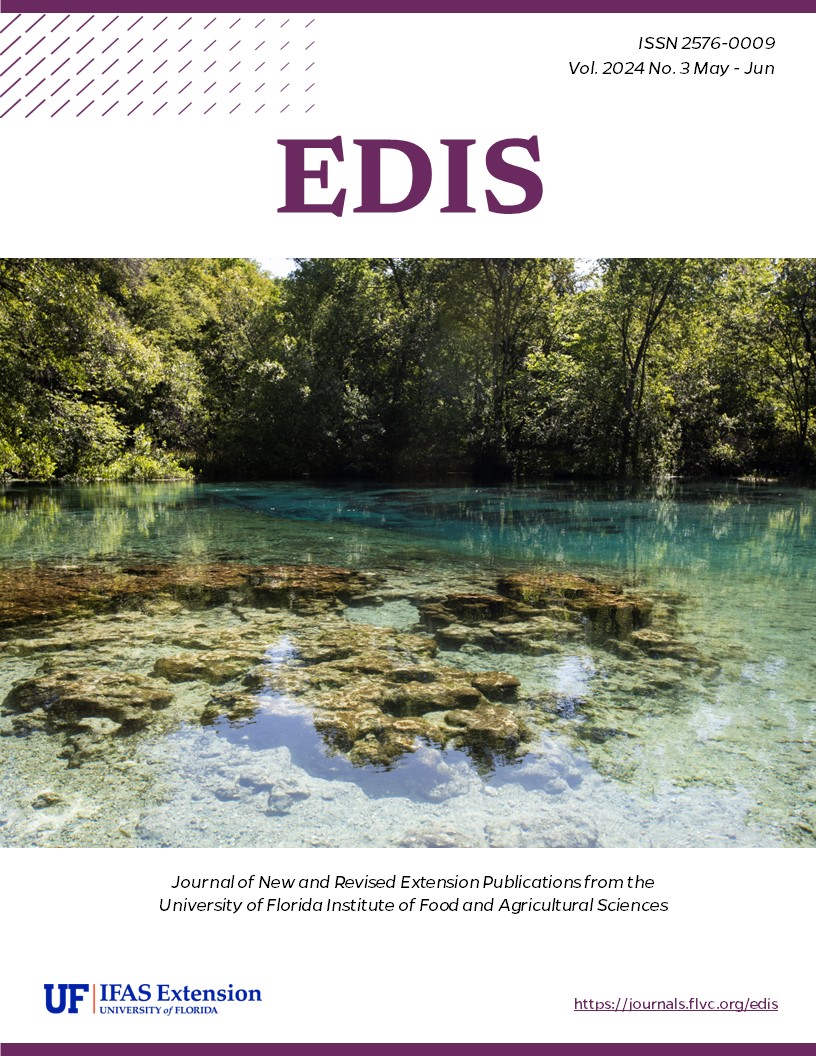Abstract
Approximately 30% of the carbon dioxide (CO2) released into the atmosphere has been absorbed by the world’s oceans. As CO2 emissions increase due to human activities so does the amount of CO2 absorbed by the oceans. Carbon dioxide lowers the pH of the ocean system, causing ocean acidification (OA). The effects of OA on economically and ecologically important aquatic species is a subject of interest. Sponges are important reef-associated species that provide shelter for fish and crustaceans in reef habitats and can also structure ecosystems through bioerosion, water filtration, and colonization of coral reef areas. This publication considers the effects of OA on marine sponges, with a focus on Florida’s coral reef.
References
Achlatis, M., R. M. van der Zande, C. H. L. Schönberg, J. K. H. Fang, O. Hoegh-Guldberg, and S. Dove. 2017. “Sponge Bioerosion on Changing Reefs: Ocean Warming Poses Physiological Constraints to the Photosymbiotic Excavating Sponge.” Scientific Reports 7:10705. https://doi.org/10.1038/s41598-017-10947-1 Bell, J. J., S. K. Davy, T. Jones, M. W. Taylor, and N. S. Webster,. 2013. “Could some coral reefs become sponge reefs as our climate changes?” Global Change Biology 19:2613–2624. https://doi.org/10.1111/gcb.12212
Biggs, B. C. 2013. “Harnessing Natural Recovery Processes to Improve Restoration Outcomes: An Experimental Assessment of Sponge-Mediated Coral Reef Restoration.” PLoS ONE 8 (6): e64945. https://doi.org/10.1371/journal.pone.0064945
Butler, J., W. C. Sharp, J. H. Hunt, and M. J. Butler IV. 2021. “Setting the Foundation for Renewal: Restoring Sponge Communities Aids the Ecological Recovery of Florida Bay.” Ecosphere 12 (12): e03876. https://doi.org/10.1002/ecs2.3876
Goodwin, C., R. Rodolfo-Metalpa, B. Picton, and J. M. Hall-Spencer. 2014. “Effects of Ocean Acidification on Sponge Communities.” Marine Ecology 35:41–49. https://doi.org/10.1111/maec.12093
Florida Keys National Marine Sanctuary. “The Coral Reef Economy” Accessed May 23, 2023. https://oceanservice.noaa.gov/news/oct17/coral-economy.html
Florida Museum. “Importance of Coral Reefs.” Accessed May 23, 2023. https://www.floridamuseum.ufl.edu/southflorida/habitats/corals/importance/
Page, H. N., C. Hewett, H. Tompkins, and E. R. Hall. 2021. “Ocean Acidification and Direct Interactions Affect Coral, Macroalga, and Sponge Growth in the Florida Keys.” Journal of Marine Science and Engineering 9:739. https://doi.org/10.3390/jmse9070739
Patterson, J., and L. Krimsky. 2018. “Ocean Acidification: An Introduction: FA206, 7/2018”. EDIS 2018 (4). Gainesville, FL. https://doi.org/10.32473/edis-fa206-2018
Peck, L. S., M. S. Clark, D. Power, J. Reis, F. M. Batista, and E. M. Harper. 2015. “Acidification Effects on Biofouling Communities: Winners and Losers.” Global Change Biology 21:1907–1913. https://doi.org/10.1111/gcb.12841
Ramsby, B. D., M. O. Hoogenboom, H. A. Smith, S. Whalan, and N. S. Webster. 2018. “The bioeroding sponge Cliona orientalis will not tolerate future projected ocean warming.” Scientific Reports 8:8302. https://doi.org/10.1038/s41598-018-26535-w
Ribeiro, B., A. Padua, A. Barno, H. Villela, G. Duarte, A. Rossi, F. da Costa Fernandes, R. Peixoto, and M. Klautau. 2020. “Assessing Skeleton and Microbiome Responses of a Calcareous Sponge under Thermal and pH Stresses.” ICES Journal of Marine Science 78 (3): 855–866. https://doi.org/10.1093/icesjms/fsaa231
Schönberg, C. H. L., and R. Suwa. 2007. “Why Bioeroding Sponges May Be Better Hosts for Symbiotic Dinoflagellates Than Many Corals.” In Porifera Research: Biodiversity, Innovation and Sustainability, edited by M. R. Custo′dio, E. Hajdu, G. Loˆbo-Hajdu, and G. Muricy, 569–580. Rio de Janeiro: Publication Museum Nactional.
Smith, A. M., J. Berman, M. M. Key Jr., and D. J. Winter. 2013. “Not all sponges will thrive in a high-CO2 ocean: review of mineralogy of calcifying sponges.” Palaeogeography, Palaeoclimatology, Palaeoecology, 392:463–472. https://doi.org/10.1016/j.palaeo.2013.10.004 Stubler, A. D., B. T. Furman, and B. J. Peterson. 2014. “Effects of pCO2 on the Interaction between an Excavating Sponge, Cliona varians, and A Hermatypic Coral, Porites furcata.” Marine Biology 161:1851–1859. https://doi.org/10.1007/s00227-014-2466-y
Vincente, J., N. J. Silbiger, B. A. Beckley, C. W. Raczkowski, and R. T. Hill. 2016. “Impact of High pCO2 and Warmer Temperatures on the Process of Silica Biomineralization in the Sponge Mycale grandis.” ICES Journal of Marine Science 73 (3): 704–714. https://doi.org/10.1093/icesjms/fsv235
Wisshak, M., C. H. L. Schönberg, A. Form, and A. Freiwald. 2012. “Ocean Acidification Accelerates Reef Bioerosion.” PLoS ONE 7 (9): e45124. https://doi.org/10.1371/journal.pone.0045124
Wisshak, M., C. H. L. Schönberg., A. Form, and A. Freiwald. 2013. “Effects of Ocean Acidification and Global Warming on Reef Bioerosion—Lessons from a Clionaid Sponge.” Aquatic Biology 19:111–127. https://doi.org/10.3354/ab00527
Wolfe, K., T. M. Kenyon, and P. J. Mumby. 2021. “The Biology and Ecology of Coral Rubble and Implications for the Future of Coral Reefs.” Coral Reefs 40:1769–1806. https://doi.org/10.1007/s00338-021-02185-9

This work is licensed under a Creative Commons Attribution-NonCommercial-NoDerivatives 4.0 International License.
Copyright (c) 2024 UF/IFAS

